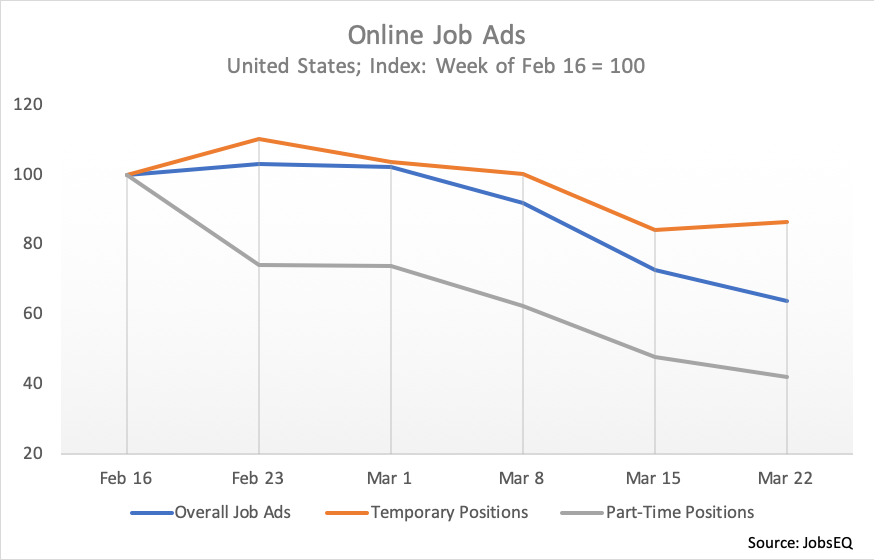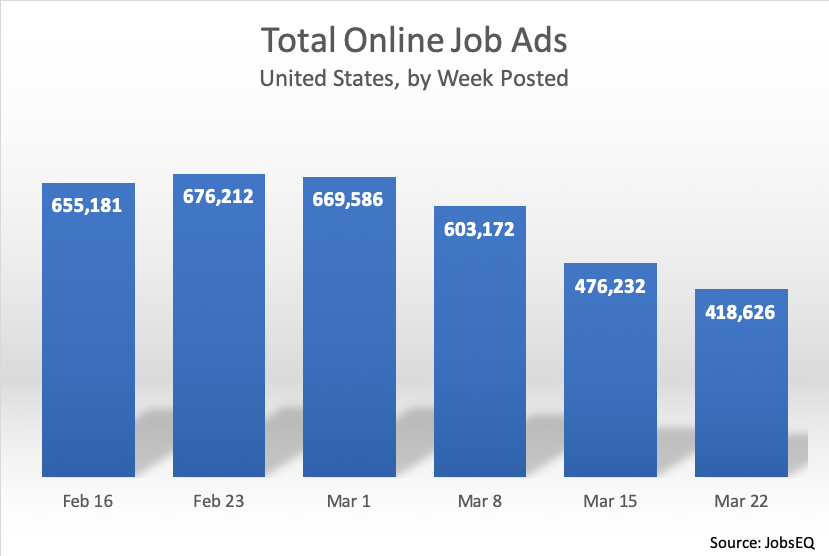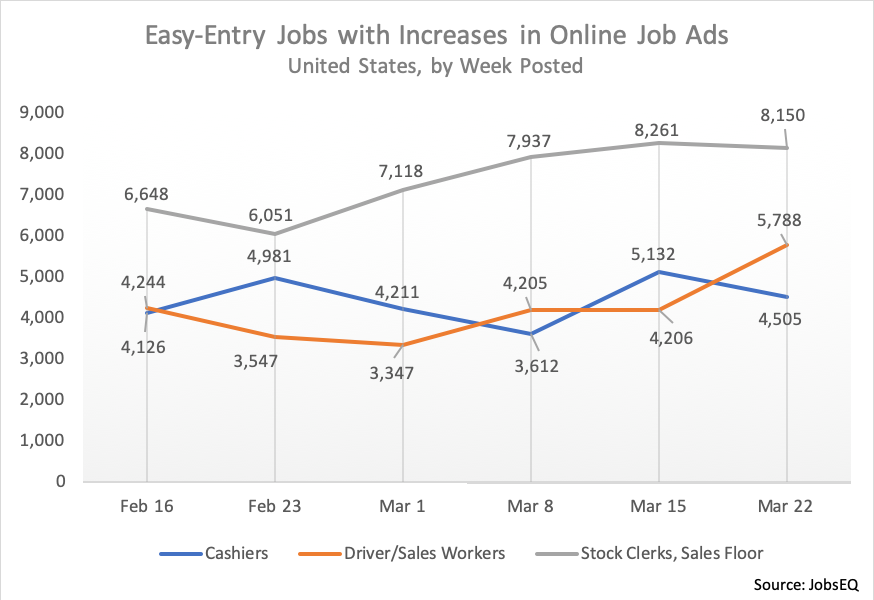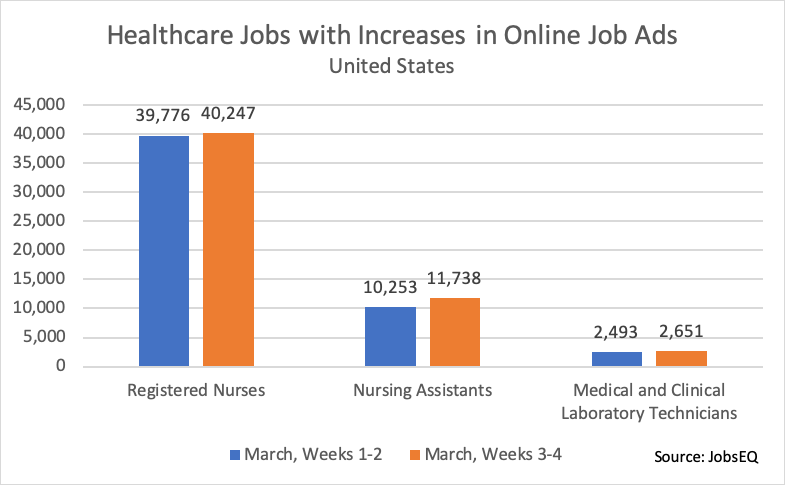COVID-19 Job Trends: Week of March 22, 2020

By Greg Chmura |
While job ads continue to decline in the United States due to the coronavirus outbreak, there are some areas of growth and opportunity.

Throughout March, ad volume in the United States dropped week to week. Volume in the fourth week of March (3/22 to 3/28) was 38% lower compared to four weeks earlier.
As pointed out in prior weeks, jobs common in the accommodation and food services industries continue to be heavy hit by the outbreak and accompanying restrictions; new job ads for these positions are at much lower than normal levels. The retail sector has also been generally tight—despite a short-lived uptick in the third week, ads for retail salesperson dropped sharply in the last full week of March.

Some jobs that are “easy entry”—typically short-term on-the-job training with no degree requirement— have seen increases in new ads over the last month. Within the retail sector, ads for stock clerks and cashiers were higher in the second half of March compared with the first. Ads for driver/sales workers increased throughout the month as demand for delivery services grew.

Healthcare jobs, not surprisingly, have also been in relatively high demand during the COVID-19 outbreak. A number of healthcare occupations saw increases in job ads during March, including registered nurses, nursing assistants, and medical and clinical laboratory technicians.

Ads for temporary positions have receded, but by a smaller than average amount. While total job ads dropped 36% over the last five weeks, temporary ads fell only 13%—these jobs include stock clerks, software developers, retail salespersons, and registered nurses, to name a few. Part-time positions, however, have seen a sharper than average decline, skidding 58% over the past five weeks.
About the Data
All data above are derived from JobsEQ, the Real-Time Intelligenceonline job ad data set, pulled from over 30,000 websites and updated daily. Each week of ads is defined as new online ads that start between Sunday and the following Saturday, inclusive (a shift in practice from prior blogs for logistical reasons). All ad counts represent deduplicated figures. The relationship between ad counts and actual hires is described here.
Many extraneous factors can affect short-term volume of online job postings. Thus, while the changes noted above should be watched over time to confirm the impacts, such a short-term snapshot can offer an early indication of labor market shifts, especially valuable in this time of unprecedented economic disruption.
Subscribe to the Weekly Economic Update
Subscribe to the Weekly Economic Update and get news delivered straight to your inbox.








